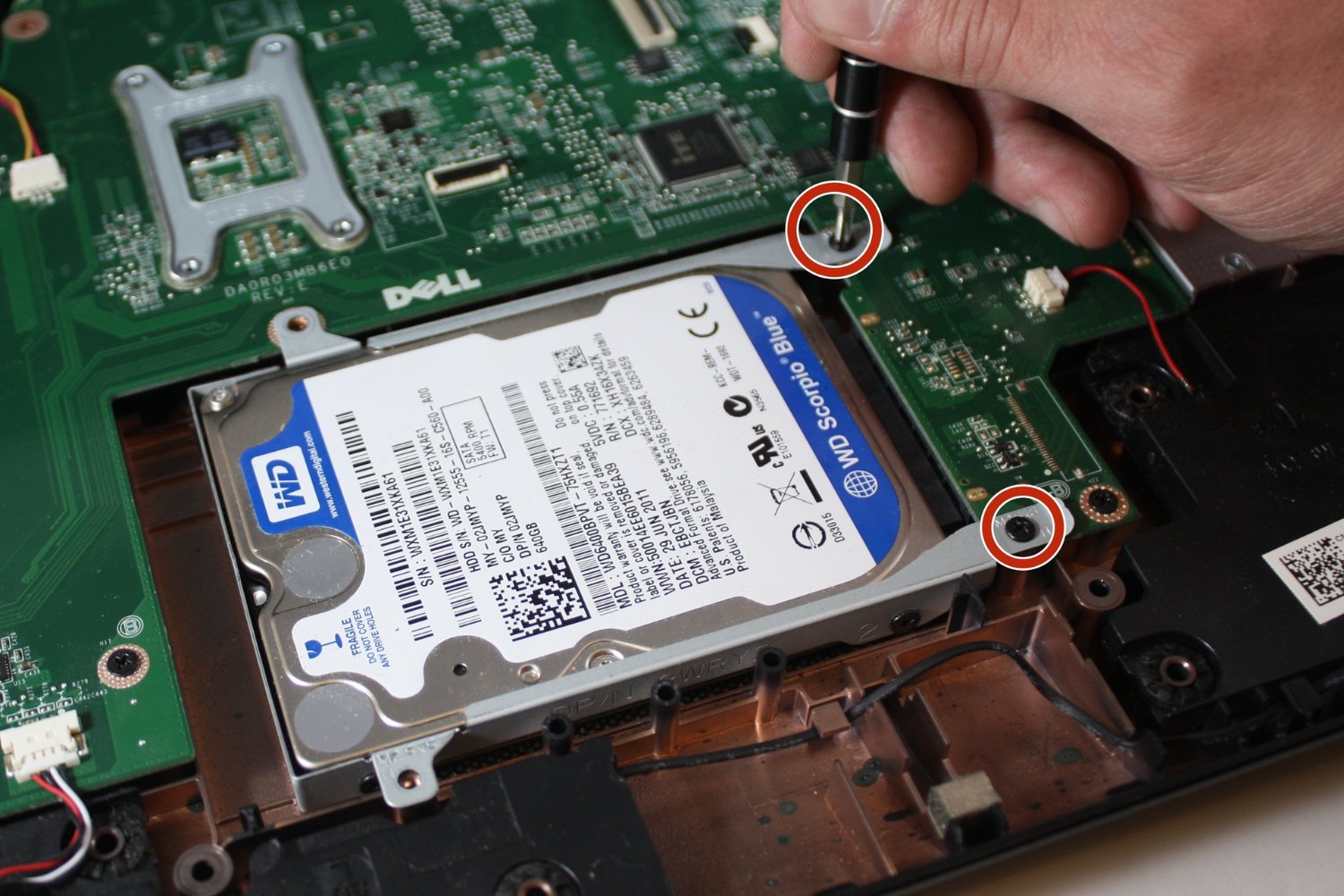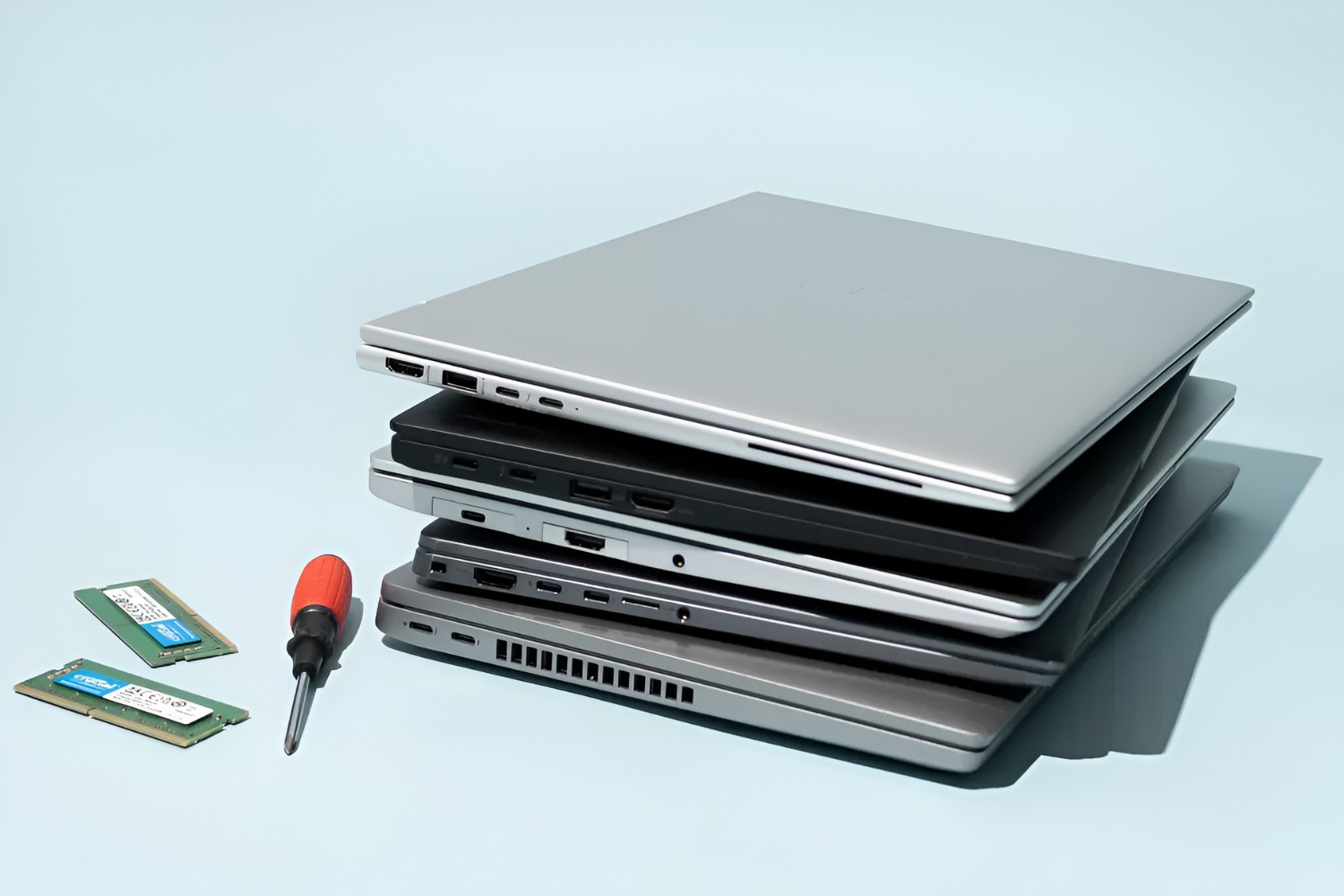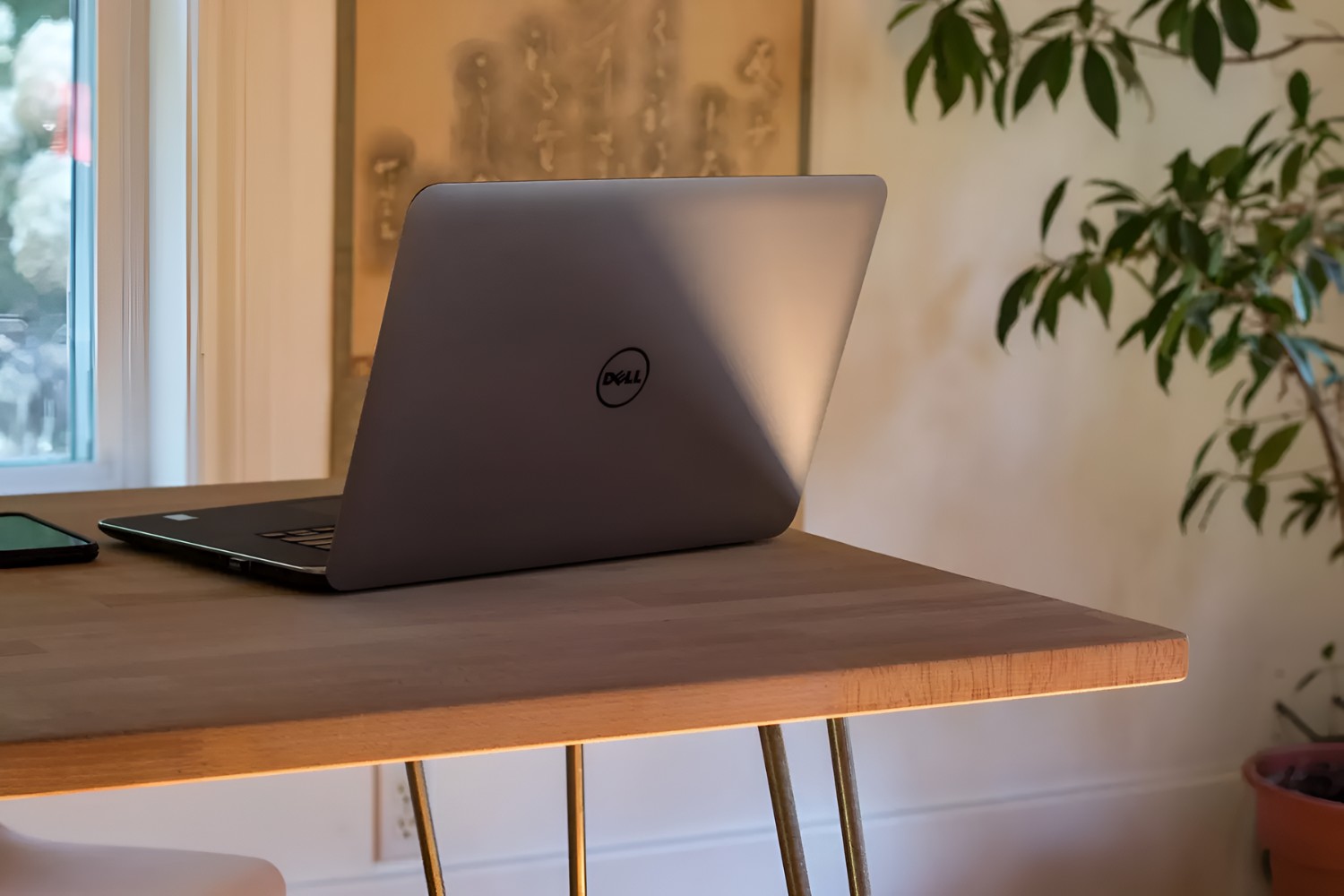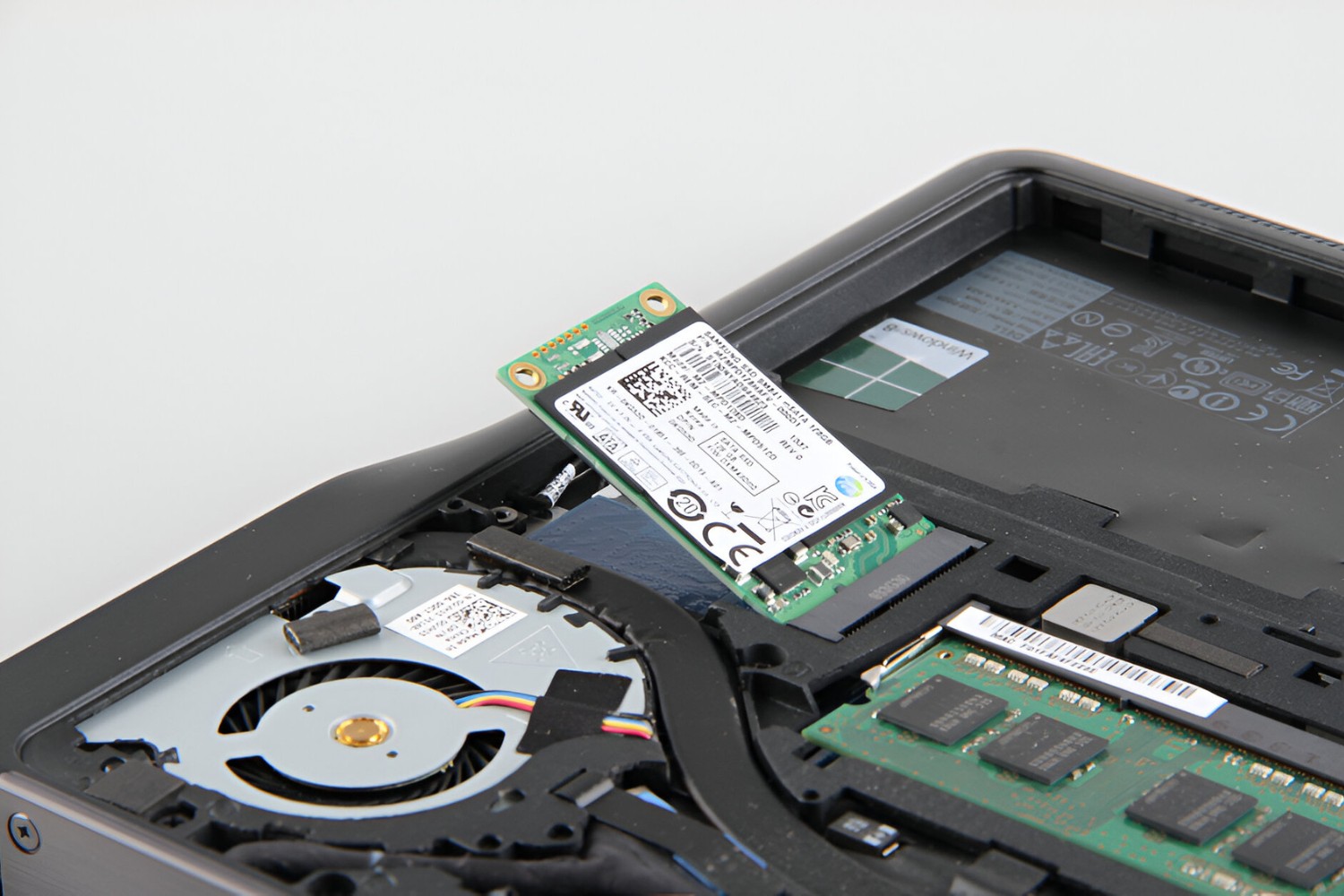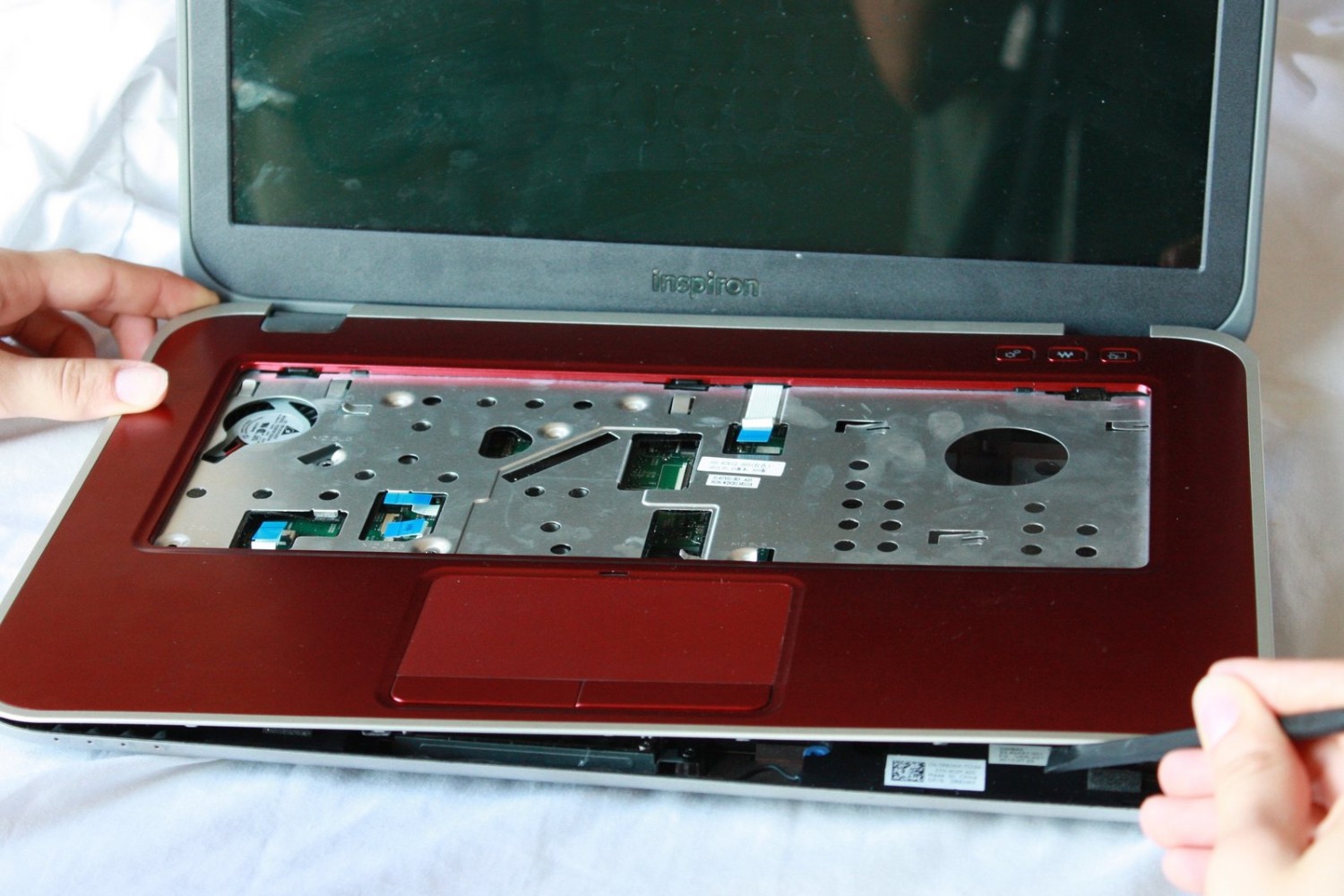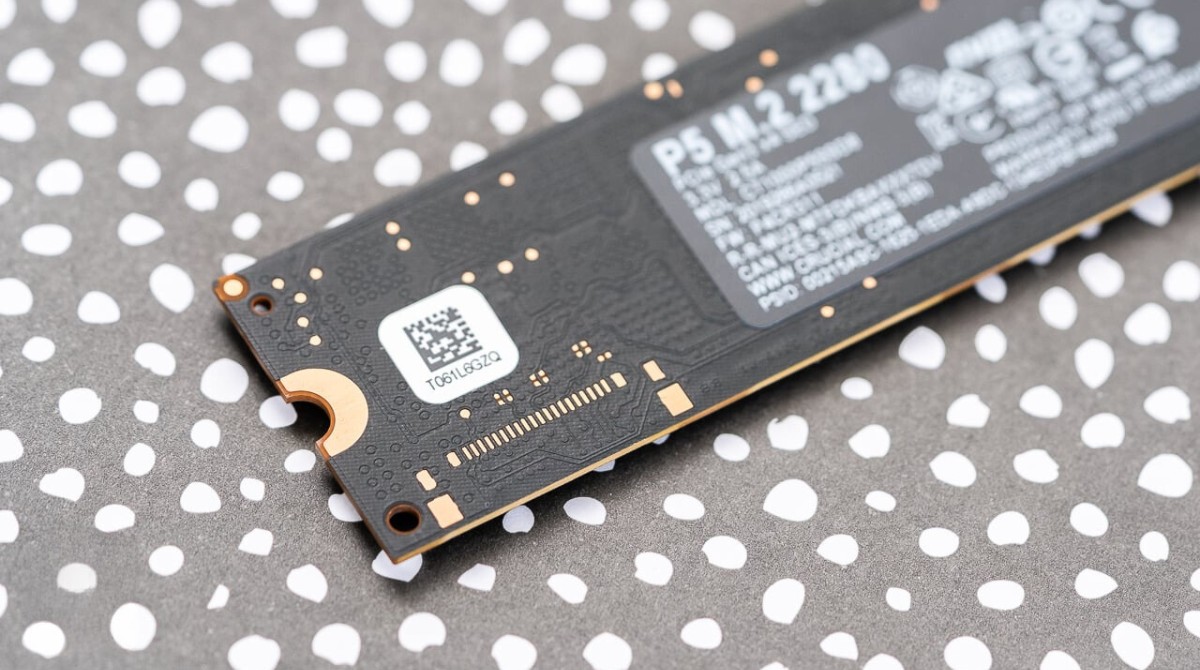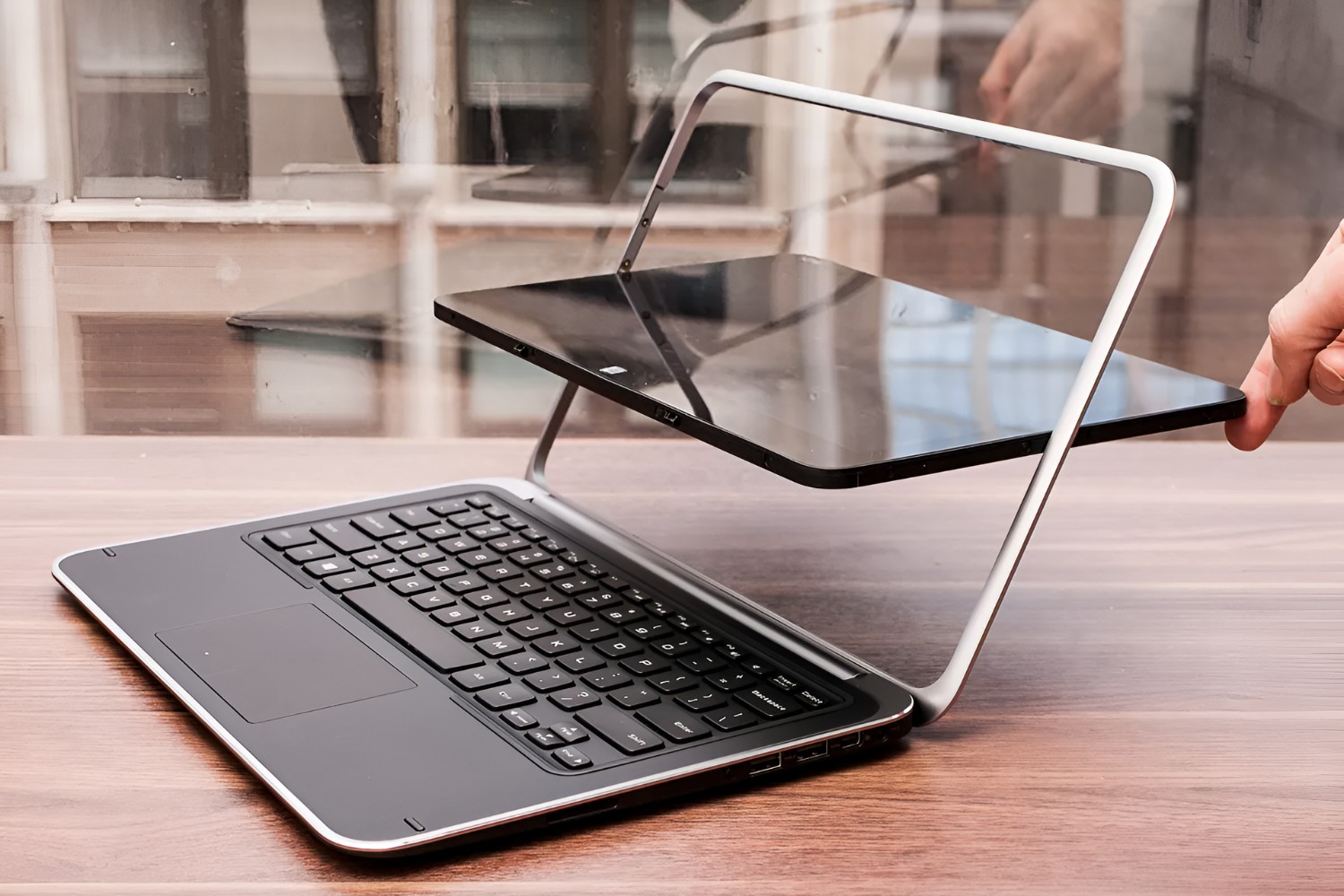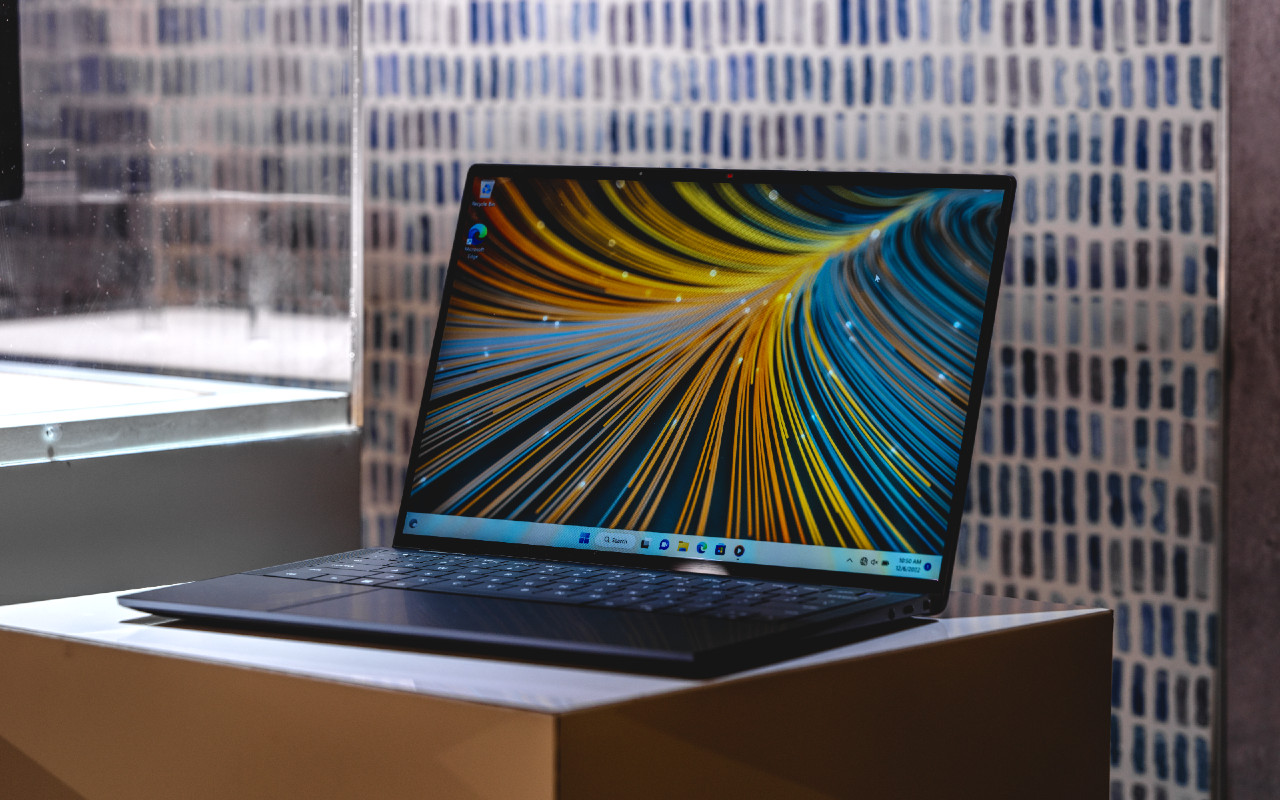Overview
When it comes to protecting your data and ensuring the safety of your files and operating system, taking a hard drive image is one of the most effective measures you can take. This is especially true if you own a Dell Ultrabook, a popular choice among laptop users for its sleek design and powerful performance.
But what exactly is a hard drive image, and why is it important? In simple terms, a hard drive image is a complete copy of your computer’s hard drive. It includes the operating system, programs, settings, and all the files and data stored on the drive. This image can be used to restore your system to its exact state at the time the image was created, providing a quick and convenient solution in case of data loss, system errors, or even hardware failures.
Taking a hard drive image on your Dell Ultrabook is a relatively straightforward process that can be done using the right tools and software. In this guide, we will provide you with a step-by-step explanation of how to take a hard drive image on your Dell Ultrabook, ensuring the safety of your valuable data and simplifying the recovery process if the need arises. We will also discuss the necessary tools and software you will need, as well as provide tips for creating a backup plan and troubleshooting common issues.
A hard drive image is an essential component of any comprehensive backup strategy. By having a recent image of your Dell Ultrabook’s hard drive, you can quickly and easily restore your system to its previous state, minimizing downtime and potential data loss. Whether it’s due to a virus attack, accidental file deletion, or a hard drive failure, having a hard drive image ensures you have a reliable backup to rely on.
In the following sections, we will delve into the step-by-step process of taking a hard drive image on your Dell Ultrabook, providing you with the necessary knowledge and guidance to safeguard your data and keep your system running smoothly.
What is a Hard Drive Image?
A hard drive image, also known as a disk image or system image, is a complete and exact copy of your computer’s hard drive. It consists of the operating system, installed programs, settings, and all the files and data stored on the drive. Think of it as a snapshot of your entire system at a specific point in time.
Unlike traditional file backups that only copy specific files or folders, a hard drive image captures everything on the drive, including hidden system files, boot sectors, and partition information. This comprehensive backup allows you to restore your system to its exact state at the time the image was created.
There are several reasons why taking a hard drive image is important:
- System Recovery: If your computer experiences a critical failure, such as a hardware malfunction or software corruption, having a hard drive image can help you quickly restore your system to a working state. Instead of reinstalling the operating system, programs, and configuring settings, you can simply restore the image and get back to work in no time.
- Data Protection: Accidental file deletions, virus attacks, or data corruption can result in the permanent loss of important files and documents. By regularly taking a hard drive image, you can safeguard your data and easily recover any lost files or folders, ensuring the continuity of your work or personal files.
- Time and Convenience: Rebuilding a system from scratch can be a time-consuming process. With a hard drive image, you can save valuable time by avoiding the need to reinstall operating systems, software programs, and reconfigure settings. It provides a convenient and efficient solution for restoring your system to its previous state.
- Testing and Deployment: Hard drive images are also useful for testing different software configurations, deploying standardized systems across multiple devices, or setting up a new computer with the same software and settings as an existing one. It streamlines the process and ensures consistency across systems.
Overall, a hard drive image is a powerful tool for data protection, system recovery, and overall convenience. By regularly creating and updating a hard drive image, you can have peace of mind knowing that your valuable data is safe and that you can quickly recover from any system issues that may arise.
Why Take a Hard Drive Image?
Taking a hard drive image is a crucial step in ensuring the safety and security of your data, as well as simplifying the recovery process in case of any system issues. Let’s explore some of the key reasons why you should consider taking a hard drive image on your Dell Ultrabook:
- Data Protection: A hard drive image serves as an insurance policy for your valuable data. It provides a comprehensive backup of not only your files but also your entire operating system and installed software. In the event of accidental deletions, data corruption, or hardware failures, a hard drive image allows for a quick and complete recovery of your system.
- Time and Effort Saving: By having a recent hard drive image, you can save a significant amount of time and effort when it comes to system recovery. Instead of spending hours reinstalling the operating system, drivers, and applications, a hard drive image allows you to restore your system to its previous state with just a few clicks. This can be a lifesaver, especially if you’re working on strict deadlines or need to get back up and running quickly.
- System Stability: Over time, your computer’s operating system and software settings can become corrupted or unstable. Taking a hard drive image when your system is running smoothly provides a baseline to return to if you experience any issues in the future. Having a clean and stable system image can help troubleshoot and fix problems without the need for a complete reinstall.
- Disaster Recovery: Natural disasters, theft, or hardware failures can result in the loss or damage of your computer. By regularly creating hard drive images and storing them in a secure location, you can have a reliable backup plan in case of such unfortunate events. This ensures that you can quickly recover your system and data, minimizing downtime and potential losses.
- Easy System Migration: If you’re upgrading to a new Dell Ultrabook or migrating to a different computer, a hard drive image makes the transition seamless. You can simply restore the image to the new device, preserving all your settings, configurations, and installed software. This saves the hassle of manually setting up the new system and ensures a smooth transition.
Overall, taking a hard drive image on your Dell Ultrabook provides you with peace of mind knowing that your data is protected, your system recovery is simplified, and you can quickly get back to work in case of any issues. It is a proactive approach to safeguarding your valuable information and ensuring the smooth operation of your computer.
Step-by-step Guide to Taking a Hard Drive Image on a Dell Ultrabook
Taking a hard drive image of your Dell Ultrabook is a straightforward process that can be accomplished using the right tools and software. By following the steps below, you can ensure the safety of your data and have a reliable backup in case of any system issues:
- Choose the Right Software: Start by selecting a reliable disk imaging software that is compatible with your Dell Ultrabook. There are several options available, such as Acronis True Image, Macrium Reflect, or Clonezilla. Research and choose a software that suits your needs and preferences.
- Gather External Storage: You will need an external storage device with sufficient capacity to store the hard drive image. This can be an external hard drive, USB flash drive, or network-attached storage (NAS) device. Ensure that it is formatted correctly and is accessible from your Dell Ultrabook.
- Create a Bootable Media: Most disk imaging software requires a bootable media to capture an image of the system drive. Follow the instructions provided by the software to create a bootable CD, DVD, or USB drive. This will allow you to launch the imaging software outside of the operating system.
- Boot from the Bootable Media: Restart your Dell Ultrabook and enter the BIOS or UEFI settings by pressing the appropriate key during startup (usually F2, F12, or Del). Configure the boot order to prioritize the bootable media that you created in the previous step. Save the changes and exit the BIOS/UEFI settings.
- Launch the Disk Imaging Software: With the bootable media inserted, restart your Dell Ultrabook. It should now boot into the disk imaging software you created. Follow the on-screen instructions to launch the software and prepare for the image creation process.
- Choose the Source Drive: Select the source drive, which is typically the system drive of your Dell Ultrabook, that you want to create an image of. Double-check to ensure that you have selected the correct drive as system drive images are critical for system recovery.
- Specify Destination Drive: Select the external storage device where you want to save the hard drive image. Make sure you have enough free space on the destination drive to accommodate the image file.
- Configure Image Options: Depending on the disk imaging software you are using, you may have additional options to configure before creating the image. These options may include compression settings, encryption, or verification options. Adjust these settings according to your preferences and requirements.
- Create the Hard Drive Image: Once all the settings are configured, initiate the process to create the hard drive image. The software will begin capturing a sector-by-sector copy of your Dell Ultrabook’s system drive. This process may take some time, depending on the size of your drive and the speed of your devices.
- Verify the Image: After the image creation process is complete, it is crucial to verify the integrity of the image. Most disk imaging software provides an option to verify the image against the original drive. This ensures that the image created is an accurate representation of your Dell Ultrabook’s system drive.
- Store the Image Safely: Once the image is verified, safely eject the bootable media and store it in a secure location. Also, store the external storage device containing the hard drive image in a safe place, preferably away from the computer, to protect it from potential damage or theft.
By following these step-by-step instructions, you can create a hard drive image of your Dell Ultrabook that serves as a reliable backup of your system and data. Remember to periodically update the image to capture any changes or updates you make to your system, ensuring that your backup remains current and up to date.
Required Tools and Software
To successfully take a hard drive image on your Dell Ultrabook, you will need specific tools and software. Here is a list of the essential requirements:
- Disk Imaging Software: Select a reliable disk imaging software that is compatible with your Dell Ultrabook. Popular options include Acronis True Image, Macrium Reflect, Clonezilla, and EaseUS Todo Backup. Research and choose a software that aligns with your preferences and offers the features you require for a successful image creation.
- External Storage Device: Prepare an external storage device with enough capacity to store the hard drive image. This can be an external hard drive, USB flash drive, or network-attached storage (NAS) device. Ensure that the storage device is formatted correctly and has sufficient free space to accommodate the image file. It is recommended to have an external storage device dedicated solely for this purpose.
- Blank CD/DVD or USB Drive: Depending on the disk imaging software you choose, you may need a blank CD/DVD or a USB drive to create a bootable media. Follow the instructions provided by the software to create the bootable media. This step is necessary as it allows you to launch the imaging software outside of the operating system.
- Dell Ultrabook: Of course, you will need the Dell Ultrabook itself, fully charged or connected to a power source. Ensure that the Ultrabook is in good working condition and has enough free space on the system drive for the hard drive image. It is also recommended to close all running programs and temporarily disable antivirus software to prevent any interference during image creation.
- Internet Connection: Having an internet connection is beneficial, especially when it comes to downloading and updating the disk imaging software. It allows you to access the latest version of the software, ensuring optimal performance and compatibility with your Dell Ultrabook.
- Backup Plan: While not a physical tool or software, creating a backup plan is essential before taking a hard drive image. Determine the frequency of image creation, where you will store the image, and any additional measures you’ll take to protect your backup. Consider using multiple storage devices and utilizing cloud storage services to ensure redundancy and off-site backup.
Having these required tools and software ready before starting the hard drive image creation process will ensure a smooth and successful workflow. Take your time to gather all the necessary components and follow the instructions provided by the software to achieve optimal results.
Creating a Backup Plan
Before taking a hard drive image on your Dell Ultrabook, it is crucial to have a well-thought-out backup plan in place. A backup plan ensures that your data is protected, and you have a reliable strategy for data recovery. Here are some key considerations when creating a backup plan:
- Determine the Frequency: Decide how often you want to take a hard drive image of your Dell Ultrabook. Balance the frequency with the amount of data you generate and the importance of the information stored on your system. Regularly scheduled backups, such as weekly or monthly, are generally recommended to keep your backup current.
- Choose Backup Locations: Decide where you will store your hard drive images. Consider using multiple storage devices, both onsite and offsite, to ensure redundancy and protection from physical damage or theft. External hard drives, network-attached storage (NAS), and cloud storage services are common options for backup storage.
- Automate the Process: Look for backup software that allows you to automate the process of taking regular hard drive images. Automation ensures that backups are done consistently without relying on manual intervention, reducing the risk of human error and improving efficiency.
- Encrypt Your Backups: To protect your data from unauthorized access, consider encrypting your hard drive images. Encryption adds an extra layer of security to your backups, ensuring that only authorized individuals can access the data.
- Perform Test Restores: Periodically test the restoration process using your backup images. Performing test restores helps verify the integrity of the backups and ensures that you can successfully recover your system if needed. It also allows you to familiarize yourself with the restoration process and troubleshoot any potential issues.
- Monitor Backup Status: Keep an eye on the status of your backups to ensure they are running successfully. Check for any error messages or warnings that may indicate issues with the backup process. Regular monitoring allows you to address any problems promptly and guarantee the reliability of your backups.
- Update Backup Plan: Regularly review and update your backup plan to accommodate any changes in your computing environment. This includes adding new files or applications that need to be included in the backup and making sure that the backup locations and storage devices are still appropriate for your needs.
By creating a backup plan that suits your specific requirements, you can ensure the safety and availability of your data, minimize the risk of data loss, and streamline the recovery process in case of system failures or disasters. A well-designed backup plan provides peace of mind, knowing that your valuable data is protected and easily recoverable.
Preparing Your Ultrabook for Image Creation
Before taking a hard drive image on your Dell Ultrabook, it is essential to properly prepare your system to ensure a smooth and successful image creation process. Here are some important steps to follow when preparing your Ultrabook for image creation:
- Free Up Storage Space: Ensure that you have enough free space on your Ultrabook’s system drive to accommodate the hard drive image. Remove unnecessary files, uninstall unused programs, and transfer larger files to an external storage device. Having sufficient free space helps prevent issues during the image creation process.
- Close Running Programs: Close any running programs and unnecessary background processes before starting the image creation process. This helps minimize the chance of errors or conflicts that can negatively impact the quality of the image. Additionally, closing programs reduces system resource usage, allowing the imaging software to operate more efficiently.
- Temporarily Disable Antivirus Software: Consider temporarily disabling your antivirus software during the image creation process. Some antivirus programs can interfere with the disk imaging software or cause unnecessary alerts and notifications. Be sure to reactivate your antivirus protection once the image creation is complete.
- Update Operating System and Drivers: Keep your Dell Ultrabook up to date by installing the latest operating system updates and driver updates provided by Dell. These updates often include bug fixes, security enhancements, and performance improvements, which can contribute to a more stable and reliable system during the image creation process.
- Check Power Source: Connect your Dell Ultrabook to a stable power source or ensure that the battery is fully charged before starting the image creation. Power interruptions or battery depletion during the image creation process may result in incomplete or corrupted images. It is important to have a consistent power source to avoid any potential issues.
- Organize System Drivers and Installation Discs: Before starting the image creation process, gather any necessary system drivers and installation discs for your Dell Ultrabook. This is particularly important if you plan to restore the image onto a new or different system. Having these resources readily available saves time and ensures a smooth recovery process.
- Create a System Restore Point: As an additional precaution, create a system restore point on your Dell Ultrabook before proceeding with the image creation. This allows you to revert to a previous state if anything goes wrong during the process. It provides an extra layer of protection and an easy recovery option if needed.
- Back Up Important Files: While the primary purpose of a hard drive image is to back up your entire system, it is still wise to separately back up any critical or irreplaceable files before proceeding. This ensures that even if there are issues during the image creation process, your most important data is still safe and accessible.
By following these preparation steps, you can ensure that your Dell Ultrabook is ready for the hard drive image creation process. Taking the time to prepare your system will help minimize potential issues and ensure a successful and accurate image capture.
Taking the Hard Drive Image
Once you have prepared your Dell Ultrabook, you are ready to take a hard drive image. Follow these step-by-step instructions to capture an accurate and reliable image of your system:
- Boot from the Bootable Media: Insert the bootable media that you created earlier into your Dell Ultrabook. Restart the computer and enter the BIOS/UEFI settings by pressing the appropriate key (e.g., F2, F12, or Del). Configure the boot order to prioritize the bootable media, save the changes, and exit the BIOS/UEFI settings. The system will now boot from the bootable media.
- Launch the Disk Imaging Software: Once your system has booted from the bootable media, the disk imaging software should start automatically or prompt you to launch it. Follow the on-screen instructions to run the disk imaging software and access the image creation functionality.
- Select the Source Drive: In the disk imaging software, select the source drive, which is typically the system drive of your Dell Ultrabook, that you want to create an image of. Double-check to ensure that you have chosen the correct drive, as system drive images are critical for successful system recovery.
- Specify Destination Drive: Choose the external storage device where you want to save the hard drive image. Ensure that the destination drive has sufficient free space to accommodate the image file. It is recommended to use a dedicated external storage device solely for storing your hard drive images.
- Configure Image Options: Depending on the disk imaging software you are using, you may have additional options to configure before creating the image. These options may include compression settings, encryption, or verification options. Adjust these settings according to your preferences and requirements.
- Initiate the Image Creation: Once all the settings are configured, start the process to create the hard drive image. The disk imaging software will begin capturing a sector-by-sector copy of your Dell Ultrabook’s system drive. The time required for the image creation process will vary depending on the size of your drive and the speed of your devices.
- Monitor the Progress: During the image creation process, monitor the progress of the operation to ensure that there are no errors or issues. Most disk imaging software provides a progress bar or status indicator to keep you informed. Allow the process to complete without interruption.
- Verify the Image: After the image creation process is finished, it is crucial to verify the integrity of the image. Many disk imaging software offers an option to verify the image against the original drive. This verification process ensures that the image created is an accurate and reliable representation of your Dell Ultrabook’s system drive.
- Save a Record of the Image: Once the hard drive image is created and verified, make sure to record the details of the image, including the date, system configuration, and any relevant notes. This record will be helpful when managing and organizing your backups, allowing you to easily access and differentiate between different images.
By following these steps, you can successfully take a hard drive image of your Dell Ultrabook’s system drive. This image serves as a comprehensive backup of your operating system, installed programs, and data, providing you with a reliable solution for system recovery and data protection.
Verifying the Image
After taking a hard drive image on your Dell Ultrabook, the next crucial step is to verify the integrity and accuracy of the image. Verifying the image ensures that it is a faithful representation of your system drive and can be relied upon for data recovery if needed. Here’s how you can verify the hard drive image:
- Launch the Disk Imaging Software: Open the disk imaging software that you used to create the hard drive image on your Dell Ultrabook. Depending on the software, there should be an option specifically for verifying an image. Locate and select this option to begin the verification process.
- Choose the Image to Verify: In the disk imaging software, select the hard drive image that you want to verify. Make sure you choose the correct image file corresponding to the image you want to validate. Double-check the file name and location to ensure accuracy.
- Initiate the Verification Process: Once you have selected the image file, start the verification process. The disk imaging software will compare the image file against the original system drive data, verifying that the image is an accurate and complete representation of your Dell Ultrabook’s system.
- Monitor and Evaluate the Results: During the verification process, monitor the progress and evaluate the results. The software will provide a detailed report indicating whether the image passed the verification or if any issues were detected. Pay attention to any error messages or warnings that may require further investigation or corrective actions.
- Take Necessary Actions: If the verification process reveals any errors or issues with the image, you may need to take corrective actions. This could involve re-creating the image, ensuring that the original system drive is healthy and error-free, or checking for any compatibility issues between the imaging software and your Dell Ultrabook.
- Record the Verification Details: Once the verification is complete, record the details of the validation process, including the date, software used, and verification results. This record serves as documentation to track the integrity of your hard drive images over time, making it easier to monitor and manage your backup collection.
- Maintain Regular Verification: Verifying your hard drive images should be a regular part of your backup routine. Make it a habit to periodically verify both new and existing images to ensure their reliability. Regular verification helps identify potential issues early on and gives you confidence in the recoverability of your data.
By following these steps and regularly verifying your hard drive images, you can ensure the integrity and accuracy of the backup data. This thorough validation process is vital for maintaining the effectiveness of your backup strategy and guaranteeing that your Dell Ultrabook’s system drive image is trustworthy and ready for data recovery if and when the need arises.
Storing the Image Safely
After taking a hard drive image of your Dell Ultrabook, it is crucial to store the image safely to ensure its accessibility and protection. A well-planned storage strategy will safeguard your backup against loss, damage, and unauthorized access. Here are some best practices for storing the image safely:
- Use Reliable Storage Media: Choose a reliable and durable storage medium to store your hard drive image. External hard drives, USB flash drives, and network-attached storage (NAS) devices are popular options. Select a storage medium with sufficient capacity to accommodate the image file and consider using high-quality, reputable brands for better reliability.
- Keep Multiple Copies: It’s wise to maintain multiple copies of your hard drive image. Redundancy is crucial to protect against hardware failures or storage media corruption. Consider keeping at least one offsite copy of the image to protect against physical disasters such as fire, theft, or other catastrophic events.
- Encrypt the Image: To ensure the security and confidentiality of your data, consider encrypting the hard drive image. Encryption adds an additional layer of protection, making it difficult for unauthorized individuals to access your backup. Choose encryption methods and algorithms that are strong and widely recognized.
- Label and Organize: Properly label and organize your hard drive image files for easy identification and retrieval. Include relevant information such as the date of the backup, the source device, and any additional notes. This labeling system will help you quickly locate the specific image you need when performing a system recovery.
- Protect Against Physical Damage: Store your backup storage media in a safe and secure place, protecting them from physical damage. Avoid exposing the storage media to extreme temperatures, humidity, direct sunlight, or magnetic fields. Consider using protective cases or sleeves to safeguard against accidental drops or impacts.
- Regularly Test Restores: Periodically test the restoration process from your stored hard drive images. This ensures that the backup files are retrievable and functional. It also allows you to verify the integrity of the stored images and make any necessary adjustments to your backup strategy if issues arise.
- Update the Backup Media: Over time, storage media can degrade or become outdated. Consider refreshing your backup media periodically to ensure their reliability. This may involve transferring the backup files to new storage devices or migrating the image files to more advanced storage technologies.
- Implement Off-Site Storage: Consider utilizing off-site storage options for additional protection. Cloud storage services provide an off-site backup solution that protects your hard drive image from physical hazards such as theft, natural disasters, or accidental damage. Make sure to choose a trustworthy cloud storage provider with adequate security measures in place.
By following these guidelines, you can ensure the safety and availability of your hard drive image for future use. Remember to regularly review and update your storage strategy to adapt to any changes in your backup needs or advancements in storage technologies. With a well-executed storage plan, you can have peace of mind knowing that your Dell Ultrabook’s hard drive image is secure and accessible when you need it.
Restoring from a Hard Drive Image
Restoring your Dell Ultrabook from a hard drive image can be a straightforward process if you follow the correct steps. Whether you need to recover from a system failure, switch to a new device, or revert back to a previous state, here is a guide to help you restore from a hard drive image:
- Create a Bootable Media: Start by creating a bootable media using the same disk imaging software you used to create the hard drive image. This bootable media will allow you to restore the image outside of the operating system. Follow the instructions provided by the software to create the bootable media.
- Connect the External Storage: Connect the external storage device containing the hard drive image to your Dell Ultrabook. Ensure that the storage device is recognized by the computer and accessible. It is recommended to use the same storage device where you initially created and stored the hard drive image.
- Boot from the Bootable Media: Restart your Dell Ultrabook and enter the BIOS/UEFI settings by pressing the appropriate key (e.g., F2, F12, or Del). Configure the boot order to prioritize the bootable media you created in the previous step. Save the changes and exit the BIOS/UEFI settings. The system will now boot from the bootable media.
- Launch the Disk Imaging Software: Once your system has booted from the bootable media, launch the disk imaging software. Follow the on-screen instructions to access the restore functionality of the software. Locate the option to restore from an image and select the hard drive image you want to restore.
- Select the Destination Drive: Choose the destination drive for the restoration process. This is typically the system drive of your Dell Ultrabook. Double-check to ensure that you have selected the correct drive to avoid accidentally overwriting any important data. In some cases, you may need to format the destination drive before restoring the image.
- Restore the Hard Drive Image: Initiate the process to restore the hard drive image. The disk imaging software will start restoring the image to the destination drive. This process may take some time, depending on the size of the image and the speed of your devices.
- Follow On-Screen Prompts: Throughout the restoration process, the disk imaging software may prompt you to fill in additional information, such as choosing specific partitions to restore or configuring advanced settings. Follow the on-screen prompts and provide the necessary input based on your requirements and preferences.
- Complete the Restoration: Once the restoration process is complete, the disk imaging software will notify you. Double-check the restored system to ensure that everything is functioning as expected. Restart your Dell Ultrabook and verify that your files, settings, and applications are restored to the state captured in the hard drive image.
- Update Drivers and Software: After the restoration process, it is important to update the operating system, drivers, and software on your Dell Ultrabook to ensure compatibility and security. Check for updates from Dell’s official website and install the latest versions of the necessary drivers and software.
- Verify the Restored System: Take some time to thoroughly test your restored system to ensure that everything is functioning correctly. Open various applications, access files, and perform common tasks to verify that the system is working as expected. Address any issues or errors promptly.
By following these steps, you can successfully restore your Dell Ultrabook from a hard drive image. This process allows you to recover your system, including the operating system, programs, and data, back to the state captured in the image. Whether you need to recover from a system failure or transfer your setup to a new device, restoring from a hard drive image provides a hassle-free solution.
Troubleshooting Tips
While taking a hard drive image on your Dell Ultrabook is generally a straightforward process, you may encounter some issues or challenges along the way. Here are some troubleshooting tips to help you overcome common problems and ensure a successful hard drive image creation:
- Allocate Sufficient Time: Taking a hard drive image can take a significant amount of time, especially if you have a large drive or a slow system. Ensure that you allocate enough time for the process to complete without rushing. Trying to rush the image creation process may lead to errors or incomplete backups.
- Check Disk Space: Verify that your Dell Ultrabook’s system drive has enough free space for the hard drive image. If the drive is running low on space, consider freeing up disk space by removing unnecessary files or uninstalling unused applications.
- Verify Compatibility: Ensure that the disk imaging software you are using is compatible with your Dell Ultrabook. Check the software’s system requirements and ensure that your Ultrabook meets those specifications. Using incompatible software may result in errors or unsuccessful image creation.
- Update Firmware and Drivers: Outdated firmware or drivers can cause compatibility issues during the hard drive image creation process. Check for any available firmware or driver updates from Dell’s official website and install them before proceeding.
- Resolve Hardware Issues: If you encounter issues during the image creation process, check for any hardware-related problems on your Dell Ultrabook. Ensure that all hardware components are properly connected and functioning correctly. Resolving any hardware issues can help ensure a smoother image creation process.
- Disable Disk Encryption: If your Dell Ultrabook has disk encryption enabled, such as BitLocker or FileVault, temporarily disable it before creating the hard drive image. Disk encryption can interfere with the imaging software’s ability to capture a complete and accurate image.
- Check External Storage: If you are using an external storage device to store the hard drive image, ensure that the device is properly connected and recognized by your Dell Ultrabook. Try using a different USB port, cable, or storage device if you encounter any issues with the connection.
- Consult Software Documentation: If you encounter specific errors or issues with the disk imaging software, consult the software’s documentation or user manual for troubleshooting guidance. The software’s support resources or online forums may also provide valuable insights and solutions.
- Perform Test Restores: Regularly perform test restores from your hard drive images to ensure their functionality. By testing the restoration process, you can identify any issues or errors early on and resolve them before a real disaster or system failure occurs.
- Seek Professional Assistance: If you are unable to resolve the issues or encounter complex problems during the imaging process, consider seeking professional assistance. Reach out to the support team of the disk imaging software or Dell’s customer support for guidance and assistance.
With these troubleshooting tips in mind, you can overcome common obstacles and successfully create a hard drive image of your Dell Ultrabook. Remember to be patient, thorough, and proactive in addressing any issues that arise. The goal is to ensure a reliable and accurate backup of your system and data.
Conclusion
Taking a hard drive image of your Dell Ultrabook is a valuable step in safeguarding your data and ensuring the smooth recovery of your system. By creating a complete backup of your operating system, programs, and files, you can recover from system failures, data loss, or even migrate to a new device with ease.
Throughout this guide, we have walked you through the process of taking a hard drive image on your Dell Ultrabook, from understanding what a hard drive image is to verifying and storing the image safely. We’ve provided step-by-step instructions, highlighted important considerations, and offered troubleshooting tips to help you achieve a successful backup of your system.
Remember to choose reliable disk imaging software that suits your needs and the right external storage devices to store the image securely. Regularly update your backup plan, test the restoration process, and keep multiple copies of your hard drive image for redundancy. Storing the image in a safe location, whether on-site or off-site, ensures its availability in case of physical damage or theft.
In the event of a system failure or a need to recover your Dell Ultrabook, you can confidently restore from the hard drive image using a bootable media and the disk imaging software. By following the appropriate steps and considering potential troubleshooting scenarios, you can retrieve your files, settings, and programs, saving time and minimizing downtime.
Taking the time to create a hard drive image and implementing a robust backup strategy is an investment in the safety and security of your data. With a reliable backup plan in place, you can have peace of mind knowing that your important files and system configuration are protected, allowing you to focus on your work or personal tasks without the worry of data loss or system failures.
By following the guidelines provided in this guide, you have the knowledge and tools necessary to take a hard drive image on your Dell Ultrabook and ensure the continuity of your system and data. Start implementing a solid backup plan today to effectively protect your information and simplify the recovery process whenever the need arises.







